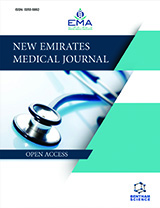Abstract
Background: The relationship between ECG changes in dilated nonischemic cardiomyopathy and ejection fraction (EF) is complex and poorly understood. Thus, this study aimed to identify the most common patterns of ECG associated with dilated nonischemic cardiomyopathy and their relationship to EF.
Methods: A retrospective cross-sectional study was conducted between 2019 and 2022, including 100 consecutive patients with nonischemic dilated cardiomyopathy. ECG data were rate, axis, left (LBBB) and right bundle branch block (RBBB), first-degree heart block, premature ventricular contractions, depth of S wave in leads V1 and V2, length of R wave in leads V2 and V6, the ratio of R/S in the lead V4, left ventricular hypertrophy (LVH), maximum R wave length in leads I, II, and III, poor R wave progression, ST-segment elevation, and T wave inversion.
Results: The most common ECG pattern associated with cardiomyopathy was T-wave inversion (47%). The EF was 23.9± 8.87% in patients with LBBB and 25.5± 8.07% in patients without LBBB (P= 0.361). In patients with T-wave inversion, the EF was 23.4± 8.21%, and it was 26.28± 8.35% in patients without T-wave inversion (P= 0.086). In patients with LVH, the EF was 23.89± 7.84%, and it was 25.5± 8.66% in patients without LVH (P= 0.354). A negative nonsignificant correlation existed between SV1, SV2, RV2, RV6, R/S V4, and maximum R in I, II, III, and EF.
Conclusions: The study showed that T-wave inversion was the most common pattern associated with dilated nonischemic cardiomyopathy. The study provided insight into the negative correlation between EF and SV1, SV2, RV2, RV6, R/S V4, and maximum R in I, II, and III, although it did not reach a significant level.
New Emirates Medical Journal
Title:Electrocardiographic Patterns and Ejection Fraction in Patients with Nonischemic Dilated Cardiomyopathy: A Cross-sectional Retrospective Study
Volume: 5
Author(s): Abdelhameed Elsayed*, Hatim Kheirallah, Abdulaziz Alsuwayh and Ibrahim Osman
Affiliation:
- Adult Cardiology Department, Prince Sultan Cardiac Center, Riyadh, Saudi Arabia
Abstract:
Background: The relationship between ECG changes in dilated nonischemic cardiomyopathy and ejection fraction (EF) is complex and poorly understood. Thus, this study aimed to identify the most common patterns of ECG associated with dilated nonischemic cardiomyopathy and their relationship to EF.
Methods: A retrospective cross-sectional study was conducted between 2019 and 2022, including 100 consecutive patients with nonischemic dilated cardiomyopathy. ECG data were rate, axis, left (LBBB) and right bundle branch block (RBBB), first-degree heart block, premature ventricular contractions, depth of S wave in leads V1 and V2, length of R wave in leads V2 and V6, the ratio of R/S in the lead V4, left ventricular hypertrophy (LVH), maximum R wave length in leads I, II, and III, poor R wave progression, ST-segment elevation, and T wave inversion.
Results: The most common ECG pattern associated with cardiomyopathy was T-wave inversion (47%). The EF was 23.9± 8.87% in patients with LBBB and 25.5± 8.07% in patients without LBBB (P= 0.361). In patients with T-wave inversion, the EF was 23.4± 8.21%, and it was 26.28± 8.35% in patients without T-wave inversion (P= 0.086). In patients with LVH, the EF was 23.89± 7.84%, and it was 25.5± 8.66% in patients without LVH (P= 0.354). A negative nonsignificant correlation existed between SV1, SV2, RV2, RV6, R/S V4, and maximum R in I, II, III, and EF.
Conclusions: The study showed that T-wave inversion was the most common pattern associated with dilated nonischemic cardiomyopathy. The study provided insight into the negative correlation between EF and SV1, SV2, RV2, RV6, R/S V4, and maximum R in I, II, and III, although it did not reach a significant level.
Export Options
About this article
Cite this article as:
Elsayed Abdelhameed*, Kheirallah Hatim, Alsuwayh Abdulaziz and Osman Ibrahim, Electrocardiographic Patterns and Ejection Fraction in Patients with Nonischemic Dilated Cardiomyopathy: A Cross-sectional Retrospective Study, New Emirates Medical Journal 2024; 5 : e02506882297515 . https://dx.doi.org/10.2174/0102506882297515240320040938
| DOI https://dx.doi.org/10.2174/0102506882297515240320040938 |
Print ISSN 0250-6882 |
| Publisher Name Bentham Science Publisher |
Online ISSN 0250-6882 |

- Author Guidelines
- Bentham Author Support Services (BASS)
- Graphical Abstracts
- Fabricating and Stating False Information
- Research Misconduct
- Post Publication Discussions and Corrections
- Publishing Ethics and Rectitude
- Increase Visibility of Your Article
- Archiving Policies
- Peer Review Workflow
- Order Your Article Before Print
- Promote Your Article
- Manuscript Transfer Facility
- Editorial Policies
- Allegations from Whistleblowers



























